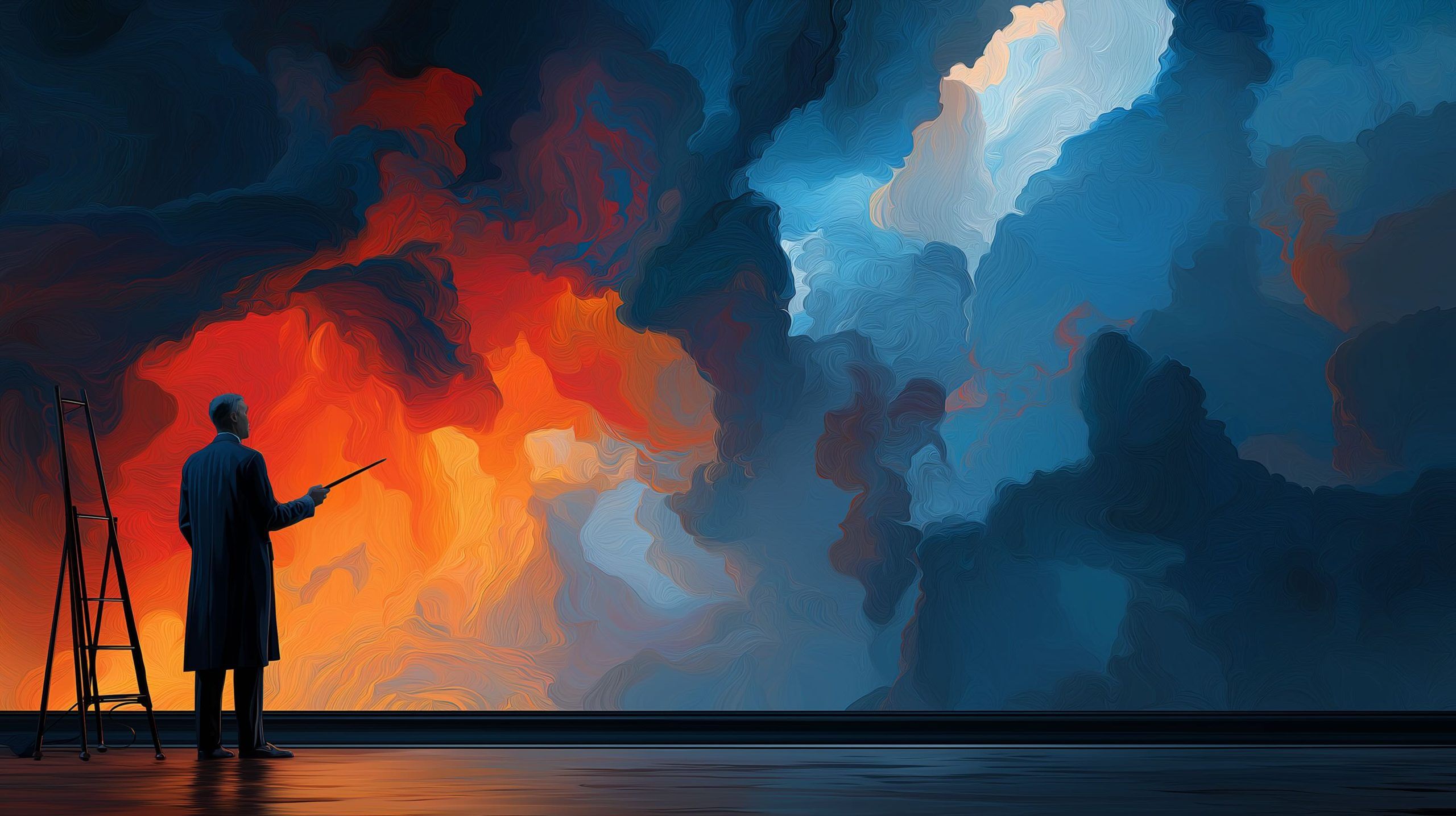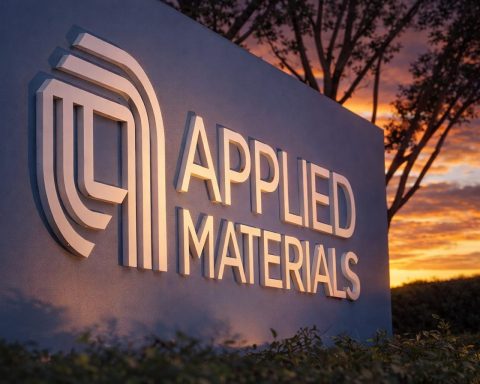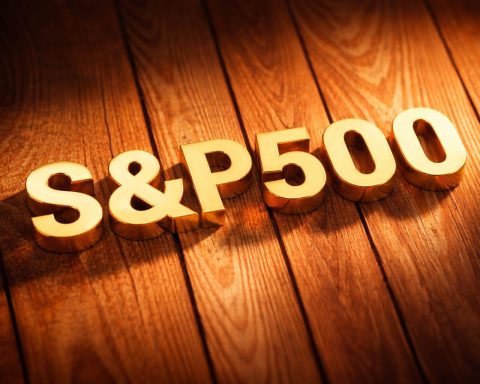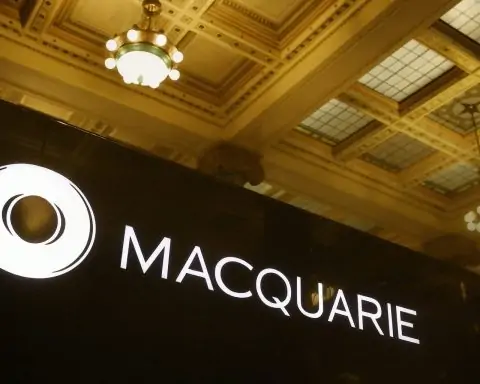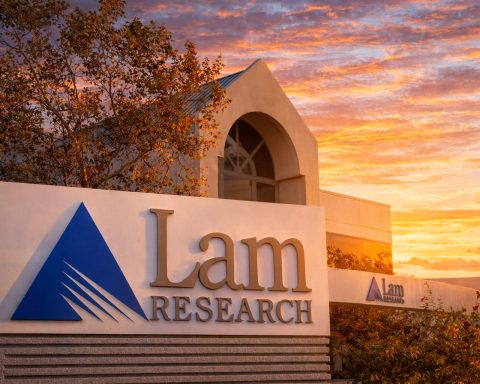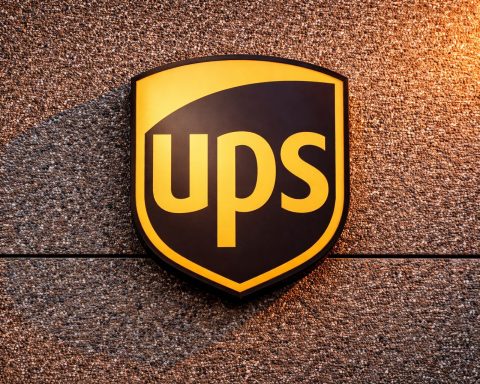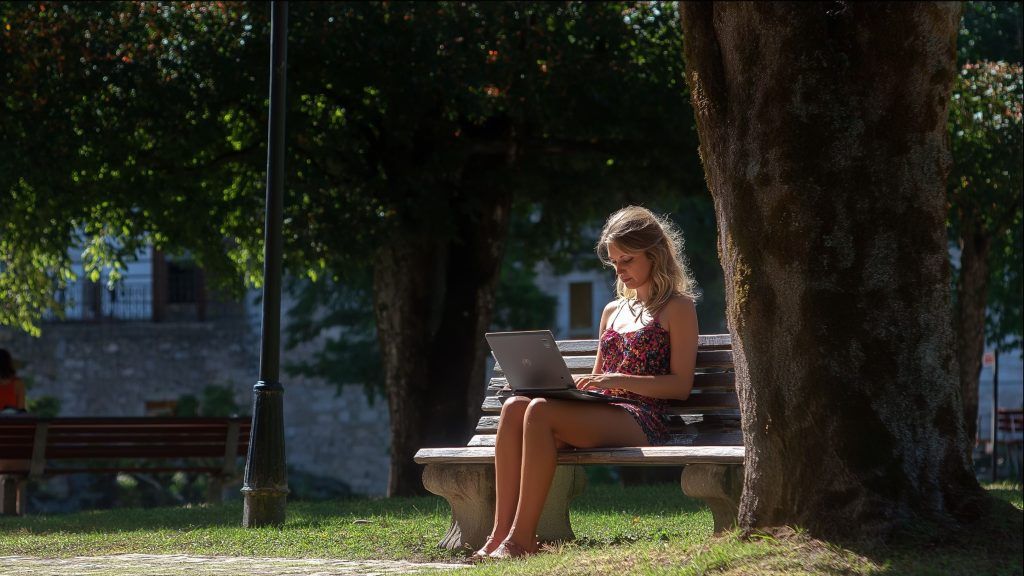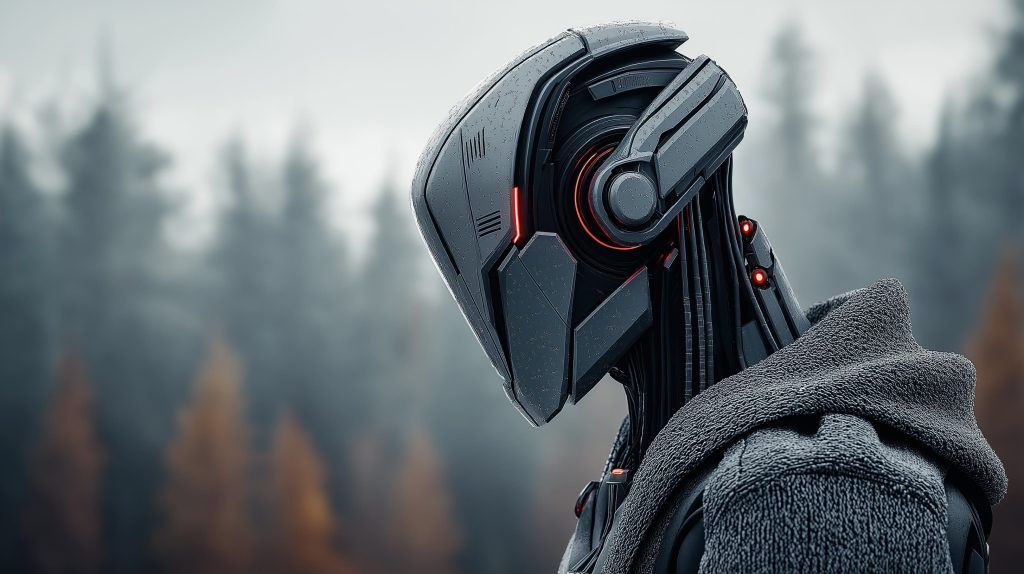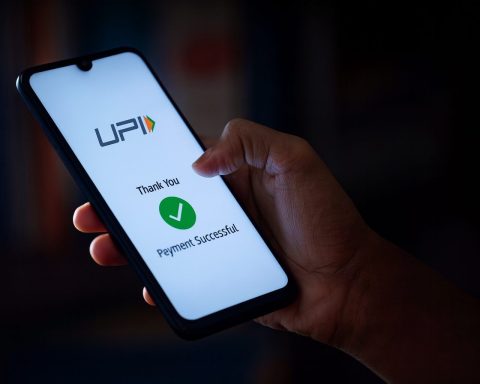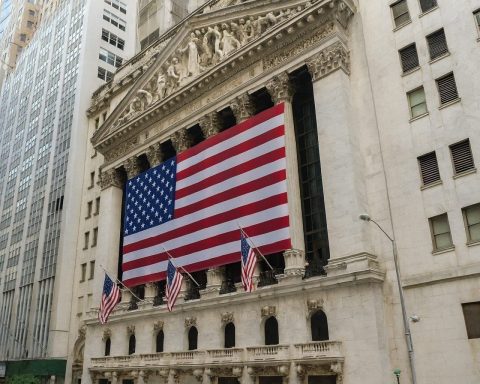- DALL·E 3, released in late 2023 and integrated into Microsoft’s Bing Image Creator, generated over 1 billion images in its first months.
- Craiyon (formerly DALL·E mini) launched in 2022 and has produced over 10 million images.
- StarryAI uses the backend Argo (powered by Stable Diffusion) and offers 1000+ stylistic presets, with a free plan of up to 25 images per day, watermarked outputs, and a daily 5-credit limit.
- Stable Diffusion, launched in 2022 as an open-source model, underpins tools like NightCafe, Leonardo.ai, and Hugging Face Spaces and supports user-trained custom models.
- In February 2025, Christie’s held a dedicated AI-generated art sale titled Augmented Intelligence, with 28 of 34 lots sold for about $729,000 and many bidders from Millennials or Gen Z.
- Adobe integrated Firefly into Photoshop and Illustrator by mid-2024, added Generative Fill publicly, and by late 2024 reported over 9 billion Firefly-generated images across its apps.
- Refik Anadol’s AI-generated installation at the Museum of Modern Art was exhibited in 2023, using a model trained on MoMA’s collection.
- The AI art market was valued around $3.2 billion in 2024 and is projected to exceed $40 billion by 2033, with estimates that AI art could reach 5% of the contemporary art market by 2025.
- A 2023 study found 87.5% of visual artists had experimented with AI in their creative process.
- In March 2023, an AI-generated image of Pope Francis in a white puffer jacket went viral, illustrating misuse risks and prompting watermarking and detection efforts.
What Is AI-Assisted Painting (and How Does It Work)?
AI-assisted painting refers to artwork created with the help of generative artificial intelligence. In simple terms, AI art is artwork made with the assistance of generative AI – software that finds patterns in huge datasets (like millions of images) and uses that knowledge to generate new content [1]. All it takes is an AI image generator and an idea: the artist types a text prompt describing the envisioned image, and the AI model produces an image based on that description [2].
Under the hood, these tools use advanced neural networks trained on vast collections of art and photos. When you prompt an AI generator to draw a tree, it uses everything it has learned about trees to create a new image [3]. Modern AI art systems often employ diffusion models (which start with random noise and refine it into a coherent image matching the prompt) or GANs (generative adversarial networks that pit two neural nets against each other to produce realistic results). The key is that the human user guides the creation – your imagination and directions (e.g. “a pink fir tree with tropical flowers”) steer the AI’s output [4]. In this sense, AI-assisted painting is a collaboration: the software supplies the technical prowess and learned knowledge of visual patterns, while the artist provides the creative vision and critical feedback to refine the outcome.
Free AI Painting Tools You Can Try
One reason AI-powered art has exploded in popularity is the emergence of free AI painting generators that anyone can use online. These tools allow artists and non-artists alike to create imagery without spending a cent. Below is an overview of some popular free AI art generators in 2024–2025:
- DALL·E 3 (OpenAI/Bing) – A cutting-edge text-to-image model by OpenAI, renowned for its ability to produce remarkably photorealistic and detailed images from prompts [5]. DALL·E’s latest version understands subtle nuances in prompts and can generate high-quality artwork for uses ranging from concept art to book illustrations. It’s now integrated into user-friendly interfaces: for example, Microsoft’s Bing Image Creator uses DALL·E 3 and allows anyone to generate images via a simple web interface or Bing Chat for free [6]. (In fact, over 1 billion images were created with Bing’s DALL·E-powered generator in its first months [7].) Via OpenAI’s own platform, DALL·E is also built into ChatGPT, so users can ask the chatbot to “imagine” an image. Free usage is limited, however – for instance, the ChatGPT integration offers a couple of free images per day before requiring payment [8]. Despite limits, DALL·E 3’s ease of use (you can simply converse with it) and high quality outputs have made it a go-to tool for many creators.
- Craiyon (DALL·E mini) – A completely free, browser-based AI image generator that anyone can use with no sign-up. Craiyon started in 2022 as “DALL·E mini” and was created by researchers Boris Dayma and Pedro Cuenca with the goal of making AI art accessible to all [9]. It runs on its own lighter-weight model and isn’t as advanced as DALL·E 3, but it can still produce a set of imaginative images for virtually any prompt you give it. The tool is known for being simple and fun: just type a description and hit “Draw.” Craiyon will attempt to sketch whatever you asked for, whether it’s “a cat riding a skateboard” or “a house made of cheese”. Because it’s free and runs in the cloud (supported by ads), it has become a popular entry point for curious users. In fact, over 10 million images have been created with Craiyon so far [10]. Previously known as DALL·E mini, Craiyon proudly markets itself as a free AI art generator “painting a new generation for the AI art revolution” [11]. While its image quality is more limited (often painting-like or abstract, with 9 thumbnail outputs per prompt), it offers unlimited generations and even extra tools like a basic background remover and image upscaler for refining results [12] [13]. For quick experimentation and quirky art, Craiyon remains an invaluable free resource.
- StarryAI – An AI art app and web service known for its extensive art style options and generous free tier. StarryAI uses powerful models (its backend “Argo” AI is powered by Stable Diffusion) to transform text prompts into visuals, and it offers 1000+ stylistic presets from anime or pixel art to photorealism [14] [15]. This makes it ideal for users who want fine control over the look and feel of the output. The interface is beginner-friendly (available as a mobile app on iOS/Android) and lets you tweak parameters or even blend your own images with AI-generated ones (a feature called image fusion) [16] [17]. Notably, StarryAI’s free plan is quite generous: you can create up to 25 images per day for free, albeit with some limitations (watermarks on the free outputs, and a cap of 5 credits per day that refresh daily) [18] [19]. Users praise StarryAI for its creative freedom – you can generate anything from logo ideas and album covers to fantasy landscapes. It also emphasizes that you own the art you create (even free users get full usage rights) [20], which is a perk for those worried about image ownership. Overall, StarryAI stands out for its style diversity and active community, proving that robust AI art tools don’t have to come at a price.
- Stable Diffusion (Various Platforms) – Stable Diffusion isn’t a single app but an open-source AI image model that has spawned many free and hobbyist tools. Developed in 2022, Stable Diffusion can be run by anyone with a decent computer (or accessed via cloud services) and forms the backbone of countless AI art websites. For example, platforms like NightCafe, Leonardo.ai, and Hugging Face Spaces offer Stable Diffusion image generators with free credits or daily generations. Many mobile apps and even StarryAI itself use fine-tuned versions of Stable Diffusion under the hood. The model is beloved for being community-driven and customizable – users can train “custom models” or styles, and share them. By 2023, tools like Stable Diffusion, DALL·E and Midjourney had spread rapidly among digital artists worldwide [21]. While using the raw Stable Diffusion may require some technical know-how, plenty of beginner-friendly interfaces now exist. In short, Stable Diffusion provides the open playground for AI art, enabling a thriving ecosystem of free or low-cost painting generators that anyone can tinker with.
(Other notable mentions: Bing Image Creator (powered by DALL·E) was already discussed with DALL·E 3, and it remains one of the easiest free options – users get a number of fast generations per day and slower generation thereafter [22]. Additionally, services like Canva and Adobe Express have introduced free AI image-generation features for design purposes [23] [24]. Even mobile apps such as Dream by Wombo or PicsArt offer free AI art generation with certain style filters. The landscape of free AI art tools is ever-growing.)
How Artists, Designers, and Hobbyists Are Using AI Painting Tools
Free AI painting generators aren’t just tech novelties – they’ve quickly been adopted by a wide range of users, from professional artists and designers to casual hobbyists. Here’s how different groups are leveraging these AI art tools:
- Artists & Illustrators: Many artists are using AI tools as a creative assist – a partner in the artistic process. Generative AI can serve as an idea generator or a digital “sketch assistant.” For example, an artist might enter various prompts to brainstorm imaginative concepts, then remix or paint over the AI outputs. AI can simulate different art styles, giving painters new inspiration for color palettes, compositions, or subjects they might not have conceived on their own. In fact, even traditional art institutions are acknowledging AI’s creative potential. In 2023, the Museum of Modern Art in New York exhibited a large-scale AI-generated installation by artist Refik Anadol, which used a machine learning model trained on MoMA’s collection to produce an ever-changing digital artwork [25]. Contemporary artists across genres – from painting and sculpture to video art – are integrating AI as just another tool in their studio. They may use AI to generate reference images, to prototype how an idea might look, or even as part of the final artwork (for instance, printing an AI-generated image on canvas and then painting over it). Notably, a recent study of visual artists found that 87.5% of participants had tried using AI in their creative process, whether for testing concepts, conducting visual research, creating draft images, or producing elements of a final piece [26]. For many, AI is like a new kind of “paintbrush” – one that can conjure complex imagery with a few words. As one artist in the study put it, “the whole creation process has been subverted” – AI changes how images can be made and opens up new workflows that were impossible before [27].
- Designers & Creative Professionals: Graphic designers, illustrators, and art directors are embracing AI generators to speed up tedious tasks and unlock creativity in commercial work. Need a quick background image for a website or an abstract pattern for a poster? Rather than manually drawing it or scouring stock photo sites, a designer can simply prompt an AI for “a seamless baroque floral pattern in pastel colors” and get instant results. Software companies are integrating these capabilities directly into design tools: by late 2024, Adobe had fully integrated its Firefly AI image generator into Photoshop and Illustrator, allowing designers to “describe what they want with a prompt and receive AI-generated textures or images that could otherwise take hours to create” [28]. This means a marketing designer could type “golden 3D text with floral vines” and get an editable graphic element within seconds, dramatically cutting down production time. AI image tools are also used for storyboarding and concept design – e.g. a video game designer might generate concept art of environments and characters to visualize ideas before investing time in manual rendering. Social media and advertising creatives use AI to whip up quick visuals for A/B testing different campaign ideas. Even architects and product designers have started using text-to-image AIs to generate conceptual art of buildings or gadgets from simple descriptions, sparking new design ideas. In essence, AI painting tools act as a force multiplier for professionals: providing instant visuals to iterate on, which enhances productivity and creative exploration.
- Hobbyists & Non-Artists: Perhaps the most revolutionary impact of free AI art generators is that they’ve enabled everyday people with no artistic training to create art. If you have a wild imagination, you no longer need years of drawing skill to bring it to life – you can open a free AI app, type your vision, and see it realized. This has led to an explosion of AI-generated content in online communities. Hobbyists are using AI tools to make everything from fantasy wallpapers and Dungeons & Dragons character portraits to personalized birthday cards and just-for-fun surreal memes. The accessibility is a huge draw: “Free to use” and “no special skills needed” are core benefits of tools like Craiyon [29]. As one review put it, anyone can now create unique artwork by simply typing a description, which makes the creative process more inclusive [30]. Many people use these tools as a form of play – experimenting with funny prompts, creating absurd or humorous images to share with friends. Others with big imaginations (but limited art skills) are using AI to illustrate their own stories or games. For instance, an amateur writer can generate illustrations for a short story or a tabletop game master can create visual scenery and character portraits for their campaign. We also see educators and students using AI art for school projects or to visualize concepts in learning materials. Overall, free AI painting generators have unleashed a wave of creative expression among hobbyists, empowering them to produce art they couldn’t have made otherwise and fostering communities where they share tips and show off their AI-crafted creations.
It’s important to note that these tools are generally seen as aids rather than replacements. Many artists still finish or touch-up AI outputs in traditional software like Photoshop, and designers treat them as starting points. But clearly, from top-tier artists to casual creators, AI-assisted painting is becoming a ubiquitous part of the creative toolkit – used for inspiration, experimentation, and acceleration of the artistic process.
2024–2025: Latest News and Innovations in AI Painting
The past two years have been a whirlwind of developments in the AI art world. Generative AI painting hit the mainstream, with rapid improvements in technology and growing public visibility. Here are some of the most notable news, trends, and innovations from 2024–2025:
- DALL·E 3 and Mainstream Access: In late 2023, OpenAI released DALL·E 3, a major leap forward in image generation that significantly improved output quality (finally handling human hands, faces, and even legible text in images far better than before) [31]. What truly made headlines was how DALL·E 3 was rolled out – integrated for free into Microsoft’s Bing. Suddenly, anyone with an internet connection could try a state-of-the-art image model just by chatting with Bing. This move drove a massive surge in usage (Microsoft reported people created over a billion images within a few months) and underscored a trend of AI features being woven into everyday products [32]. By 2024, you didn’t need technical know-how or paid credits to use AI art – it was as accessible as doing a web search.
- Adobe’s AI Integration in Creative Tools: In 2023, Adobe launched Firefly, its own generative AI trained on Adobe Stock images, and by 2024 Adobe had deeply integrated AI generation into its flagship software. Photoshop’s “Generative Fill” feature moved from beta to public release, allowing users to extend or modify images by simply typing what they need (for example, “add a sunset in the background” to a photo) [33]. In mid-2024 Adobe announced an updated Firefly Image Model in Photoshop and a Generative Expand tool, which dramatically improved quality and gave users more control over the AI outputs [34] [35]. Adobe also built generative AI into Illustrator (for instance, a Generative Recolor and Generative Shape Fill that can apply AI-created textures to vector graphics) [36] [37]. These innovations signal that AI-assisted painting isn’t confined to standalone apps – it’s becoming a seamless part of professional creative workflows. Adobe’s moves were also closely watched because of their stance on ethics: they trained Firefly on licensed/copyright-free content and even pay contributing artists a bonus for the use of their stock images [38], positioning their AI as “creator-friendly.” By late 2024, the company reported over 9 billion images had been generated with Firefly across its apps [39]. This mainstream integration has made AI a standard tool for designers and artists using Creative Cloud, and it hints at a future where AI features are simply baked into all creative software.
- AI Art on the Auction Block: The fine art market took AI art more seriously than ever in 2024–2025. A major milestone came in February 2025, when Christie’s (the renowned auction house) held its first-ever auction dedicated entirely to AI-generated art [40]. The sale, titled “Augmented Intelligence,” featured works by notable AI-art pioneers like Refik Anadol, Claire Silver, Holly Herndon & Mat Dryhurst, among others [41]. It turned out to be a resounding success: 28 of 34 lots sold, totaling about $729,000 in sales and beating pre-auction estimates [42]. This event was a clear signal that AI-created art has genuine demand among collectors. Notably, the auction attracted a much younger demographic than typical high-end art sales – nearly half of the bidders were millennials or Gen Z [43]. Christie’s VP of digital art sales, Nicole Sales Giles, remarked that AI in art is becoming widely accepted especially by younger collectors because “AI… is permeating more of our daily lives,” and for digital-native generations, this “familiarity translates into a greater appreciation for the technology and process behind the art, making the journey of creation as desirable as the artwork itself” [44]. In other words, many new collectors see AI artworks as innovative and conceptually intriguing, not just images on a screen. By the end of 2024, several other galleries and auction platforms had also featured AI pieces, and industry reports began projecting significant growth in the AI art market (one analysis valued the AI-in-art market at $3.2 billion in 2024, with a projected rise to over $40 billion by 2033) [45]. Some estimates suggest that AI-generated art could comprise 5% of the contemporary art market by 2025 [46] – a remarkable figure for a genre that barely existed a few years ago.
- Innovations in AI Models: On the technical front, 2024 saw the release of new and improved image models. Stable Diffusion XL (SDXL), a next-generation version of the open-source model, launched in mid-2023 and was widely adopted in 2024 for its improved realism and higher resolution outputs. Companies like Midjourney (though a paid service) continued to iterate, with Midjourney v5 and v5.1 (and later v6 beta) achieving astonishing photorealism that frequently went viral online. We also saw niche models focusing on specific aesthetics – for example, Anime and cartoon-focused AI models, 3D rendering AIs, and models like OpenAI’s Point-E which generates 3D point clouds from text. Google and Meta made strides too: Google released research on a model called Imagen (though not public) and a tool called Muse for generative images, while Meta open-sourced Segment Anything (useful for image editing) and teased AI art tools in its platforms. In summary, the innovation pipeline remains hot, with each generation of AI models improving coherence, resolution, and controllability. Many of these advancements trickle down into the free tools; for instance, when OpenAI improved DALL·E or Stability improved Stable Diffusion, millions of users benefit through the interfaces that deploy those models.
- Growing Communities and Educational Resources: Alongside the tech, the community around AI art blossomed further. By 2025, online communities (Reddit forums, Discord servers, etc.) for prompt-sharing and AI art tips had hundreds of thousands of members each. New terms entered the vernacular – “prompt engineering” became a sought-after skill (crafting just the right phrase to get the desired art output), and users share “prompt formulas” for achieving certain styles. We’ve also seen traditional art institutions dipping toes in AI: for example, some art schools and digital art courses now include modules on AI image generation and ethics, ensuring the next generation of artists are fluent in these tools. Meanwhile, more user-friendly features have been introduced in AI apps (like drag-and-drop image inputs, pose control, or sketch-to-image tools) making it easier for anyone to direct the AI. In late 2024, stability and OpenAI also implemented more content safeguards (watermarking AI images [47], stricter filters on disallowed content) in response to misuse concerns (see next section). All told, the period of 2024–2025 has solidified that AI-assisted painting isn’t a passing fad but an evolving field – one that’s democratizing art creation, attracting serious investment and talent, and continually surprising us with what’s possible.
Expert Insights: Perspectives from Enthusiasts to Critics
The rise of AI painting has prompted lively debate and diverse opinions across the art and tech communities. Industry experts, artists, and researchers have weighed in with both excitement and caution. Here we compile some notable insights and quotes illustrating the range of perspectives:
- “AI has emerged as a desirable collaborator in artistic creation.” – Digital art scholar Lopez (2023) [48]. Many in the art world view AI as a tool alongside the artist, not a replacement. The idea of AI as a “collaborator” suggests that artists work with algorithms to set creative rules and constraints, much like directing an assistant. Crucially, “it is the artist who will train the AI and determine its environment and learning rules, which makes the AI dependent on the artist”, Lopez notes [49]. This encapsulates the pro-AI artist stance: the human is still the mastermind, guiding the machine. Artists who embrace AI often say it expands their creative repertoire – allowing them to explore styles or ideas beyond their manual skills, while still imprinting their own intent on the final work.
- “The new technology gives me four hands.” – Miao Xiaochun, contemporary artist [50]. This vivid quote comes from a Chinese new media artist describing how AI amplifies his productivity. By giving him “four hands,” AI allows him to execute work faster and juggle more creative tasks than before. Similarly, other artists in that same study spoke of AI as a “stimulant” or “another pair of hands” that enhances their imagination and speed [51] [52]. Notably, only 2 out of 29 artists interviewed expressed worry about losing their jobs to AI – the vast majority were not afraid of AI supplanting their creativity; they viewed it as a tool or “thinking system” to boost their work [53]. This insight from practitioners suggests that many artists see AI as empowering rather than threatening, provided they remain in control of the creative direction.
- “AI in art is becoming more widely accepted because AI, in general, is permeating more of our daily lives…” – Nicole Sales Giles, Christie’s [54]. Giles, who spearheaded the AI art auction at Christie’s, observed how younger collectors have a comfort level with AI that translates into appreciation for AI-generated art. Her point underscores a broader acceptance: as society grows used to AI technologies (from voice assistants to AI cameras), the novelty or fear around AI-created art diminishes. People begin to judge AI art for the end result and concept, not just fixate on the fact that a computer was involved. Giles noted that for Gen Z and millennials, the process behind the art can be as intriguing as the final piece [55] – knowing an artwork was co-created with an algorithm becomes part of its story and appeal, rather than a drawback. This perspective from the art market indicates that attitudes are shifting, with AI art gaining legitimacy as just another artistic approach.
- “People genuinely did not think about the degree to which AI is a collaborative tool… The sale highlighted just how much of a collaborative tool and how much of an extension of our existing practices AI art is.” – Sarp Kerem Yavuz, visual artist [56]. Yavuz, one of the artists featured in the 2025 Christie’s auction, offered this insight after seeing reactions to AI art. He laments that many assume using AI means an artist “just pushed a button,” whereas in reality the artist might have spent countless hours iterating on prompts, curating outputs, and integrating them into their practice. His quote emphasizes that AI art still requires human creativity and curation – the AI is an extension of the artist’s toolkit, similar to how photography, Photoshop, or any new medium once extended art practices. This reflects a sentiment among pro-AI artists: the artistry lies in how you use the tool. Yavuz and others are keen to dispel the misconception that AI does all the work; instead, they highlight the collaborative dance between human and machine in crafting a compelling piece.
- “Although AI may replicate a style, it can never capture the deep narrative forged by human effort and intuition… The labor, creativity, and passion that characterize human artistry endow each work with an intrinsic value that a machine cannot achieve.” – Sheena Iyengar, Professor at Columbia Business School [57]. Iyengar, a researcher who studied perceptions of AI vs human art, provides a thoughtful counterpoint. This quote comes from her discussion of a study in which people consistently valued art labeled as human-made higher than identical art labeled as AI-made. Her stance is that human art has intangible qualities – a narrative, an emotional intentionality – that people inherently cherish. Even if an AI can mimic a Van Gogh style painting, the knowledge that a human mind and hand crafted a piece adds a story and soul that pure algorithmic output lacks. This expert view reminds us that while AI can dazzle with technical prowess, many still consider authentic human creativity irreplaceable. It’s a perspective that fuels arguments for preserving traditional art and ensuring human artists aren’t eclipsed by generative art.
- “AI art is vampirical – feasting on past generations of artwork even as it sucks the lifeblood from living artists.” – Matt Corrall, game artist and critic [58]. This rather vivid critique (from an online essay) captures the fierce opposition some artists have toward AI generators. The “vampirical” metaphor refers to how AI models are trained on millions of human-made images (the works of past and present artists) without those artists’ consent, and then the AI potentially competes with those very artists for attention or jobs. This critique embodies the feeling that AI companies have exploited the creative community’s work as free training data. Corrall’s view aligns with many illustrators and photographers who fear their style is being cloned by AI and their livelihood threatened. Such ethical outrage has been a driving force behind petitions and lawsuits (as we’ll detail in the next section). It’s an emotionally charged stance but one widely shared in certain art circles – that generative AI, as currently implemented, is more parasitic than transformative, unless proper compensation and consent issues are addressed.
- “I think A.I. is a poison to the creative process… it makes your work worse and makes you less interesting and less employable.” – David Palumbo, professional illustrator [59]. Palumbo, a well-known fantasy illustrator, voiced this blunt take in 2024 as he urged fellow artists not to rely on AI. Coming from someone with two decades in the industry, this quote encapsulates the fear that using AI could erode an artist’s individual voice and skill. His argument: great art is valued for the unique vision of the artist, and if everyone leans on AI, you get homogenized, “average” results (“it produces averages,” he notes [60]). Moreover, if an illustrator bases their workflow on AI-generated content, Palumbo suggests they might not develop their own ideas as deeply, and art directors might find their work less original (hence “less employable”). This perspective reflects a concern that over-reliance on AI could dull human creativity and flood the market with derivative imagery. It’s a caution that while AI can speed things up, artists must be careful not to let it hollow out the creative rigor that gives art value.
As we can see, opinions on AI-assisted painting span a broad spectrum. Some celebrate it as a revolutionary collaborator that augments human creativity, while others see it as a threat to the sanctity of human art and artists’ livelihoods. There’s excitement about new creative frontiers, but also genuine anxiety about what automation means for artistry. In truth, both sides carry valid points – which is why the conversation around AI art’s role is so important as the technology advances.
Challenges, Criticisms, and Ethical Concerns
Despite the impressive progress and enthusiasm around AI painting, there are significant criticisms and concerns that have come to the forefront. It’s crucial to address these issues as part of the public discourse on AI art:
1. Copyright and Fair Use Battles: One of the loudest debates is over the source of AI’s “knowledge.” Generative art models are trained on vast datasets of images scraped from the internet – inevitably including copyrighted artworks and photos. Artists and photographers have raised the alarm that their works were used without permission to train these models, which can then produce output in their style. In early 2023, a group of artists (Sarah Andersen, Kelly McKernan, Karla Ortiz, and others) filed a high-profile class-action lawsuit against AI firms like Stability AI (maker of Stable Diffusion) for copyright infringement, alleging that the AI effectively creates derivative works based on billions of copyrighted images in the training data. Around the same time, Getty Images sued Stability AI in the UK, claiming unauthorized use of 12 million Getty photos to train the model. (Notably, by mid-2025 Getty had dropped its direct copyright claims after some legal developments, focusing instead on trademark issues and other aspects [61], but the case highlighted the thorny legal questions.) An open letter signed by over 6,000 artists in 2023 argued that “these models… exploit human artists, using their work without permission or payment to build commercial AI products that compete with them.” [62] This encapsulates the core ethical issue: is it right for AI companies (and by extension, AI users) to benefit from training data sourced from creative works, without credit or compensation to those creators? While AI developers contend that training data use falls under fair use (a claim being tested in courts) or that the models do not store or regurgitate exact images, many artists feel a boundary has been crossed. The ethical consensus is still evolving, but there are calls for new regulations – perhaps requiring datasets to exclude artists who opt-out, or establishing compensation frameworks (Adobe’s approach of paying stock contributors is one example [63]). Until such frameworks are in place, the relationship between AI art and copyright remains fraught, casting a shadow over the “free” in free AI generators (since someone’s work may have indirectly fueled those outputs).
2. Ownership and Intellectual Property: A related point is the murkiness around who owns AI-generated art. If you create a painting via an AI, can you copyright it like a traditional painting? Current legal guidance in many jurisdictions is no – not unless there was a significant human creative contribution. In a landmark U.S. case in 2023 (Thaler v. Perlmutter), a judge ruled that a work “autonomously generated by an AI system” cannot be copyrighted under U.S. law [64]. Copyright is intended to protect “the fruits of intellectual labor” of human minds [65]. This means purely AI-created images are in the public domain, and even if you wrote the prompt, the lack of human originality in the output could make it ineligible for copyright. The U.S. Copyright Office has explicitly stated that it will register works with AI elements only if a human has creatively modified or guided the final expression in a substantial way [66]. Practically, this means artists using AI must be careful – if they try to sell AI-generated art or use it commercially, they might not have legal protection against someone else copying it. This is a limitation that both professional and hobbyist creators need to understand. Some platforms like Shutterstock have banned pure AI images from their libraries due to this uncertainty. On the flip side, some AI companies assert ownership or licensing over images generated with their tool (check each tool’s terms of service – e.g., some allow full user ownership, others don’t). In summary, the question “Who owns AI art?” is unresolved, posing challenges for those who want to treat AI art like any other creative asset. Until laws adapt, the default position is that human authorship is essential for art to have traditional IP rights [67].
3. Authenticity and Artistic Value: Beyond legalities, there’s an existential artistic question: Does AI-generated art have the same value and authenticity as human-made art? Some critics view AI art as soulless – a collage of learned patterns without genuine inspiration or story. They argue that art’s value comes from the human experience and intent behind it. Interestingly, research supports that the public does perceive a difference. In a 2024 study, participants were shown artworks and told whether they were AI-made or human-made (sometimes the labels were intentionally mixed up). The result: people rated the AI-labeled artworks as less creative, less skillful, and valued them 62% lower in price on average than identical works labeled as human [68] [69]. This bias persisted even though participants couldn’t reliably distinguish AI from human art without labels. The moment an artwork was associated with AI, many viewers discounted its artistic merit. As one researcher put it, people feel that “although AI may replicate a style, it can never capture the deep narrative and intuition” of a human artist [70]. This perception is a hurdle for AI art gaining acceptance on the same footing. However, the study had a silver lining: when human-made art was presented alongside AI art, the human art’s value actually rose in the eyes of viewers [71]. It’s as if seeing the contrast made people more appreciative of the human touch. In practice, some human artists are already leveraging this: emphasizing the handmade, labor-intensive nature of their work as a selling point, implicitly saying “no AI involved here.” An author of the study suggested artists might do well to “remind people that a lot of the art they buy… is made by hand,” as that could “drive up the perception that what they’re doing is valuable and creative.” [72] We might soon see labels in galleries indicating “human art” as a mark of distinction. In any case, questions of authenticity (“is this really art or just an algorithm?”) will likely linger around AI creations, and the art world is actively debating how to categorize and appreciate AI-assisted works.
4. Ethical Use and Misinformation: Another major concern with AI-generated images is their potential misuse. As the technology has improved, AI models can now produce stunningly realistic images that are hard to tell apart from real photographs or paintings. This raises the specter of deepfakes and visual misinformation. A notorious example occurred in March 2023, when an AI-generated photo of Pope Francis in a stylish white puffer jacket went viral on social media [73]. The image, made with Midjourney, fooled huge numbers of people (including celebrities) into thinking the Pope had actually worn this flamboyant coat, when in reality it was entirely fictional [74]. Only subtle oddities (like a distorted hand) gave it away. This incident (the “Pope in a puffer jacket”) was a wake-up call that AI images can spread lies. Not long after, AI “photos” of events that never happened (from a fake Donald Trump arrest to fake explosions) popped up online, sometimes inciting real confusion or panic before being debunked [75]. The ethical challenge is clear: How do we prevent AI from being used to deceive? Solutions like cryptographic watermarks and detection tools are in development [76] [77] – for instance, Bing’s Image Creator now embeds an invisible watermark in each image indicating it’s AI-made [78]. But detection isn’t foolproof, and the “peril” of AI’s power is that anyone can fabricate visual information with a few keystrokes. This doesn’t relate to art per se, but it’s part of the broader ethical landscape of AI image generation. Even within art circles, some find it problematic if AI art can mimic an artist’s style so closely that it’s indistinguishable – it could enable forgeries or dilute the artist’s brand. Bias and Representation issues are another ethical facet: early AI models were criticized for racial and gender biases in how they depicted people (reflecting skewed training data). This led to efforts to improve dataset diversity and allow users more control (for example, explicitly telling the AI to draw a person of a certain ethnicity to avoid defaulting to biased choices). While strides have been made, users should be aware that AI outputs can inadvertently reinforce stereotypes or problematic imagery if not guided carefully. In summary, the ethical use of AI painting tools requires vigilance: creators need to consider the implications of what they generate and share, platforms must enforce content guidelines (filtering out extreme or non-consensual imagery), and as a society we’ll need new norms (or even laws) to handle the fallout of AI-generated “fakes.” The AI art community generally encourages responsible creativity – using these powerful tools for expression and innovation, not deception or harm.
5. Impact on Artists’ Livelihoods: A deeply personal concern for many artists is how AI might affect their ability to make a living. We’ve seen concept artists and illustrators report that some clients or companies are now asking for AI-generated drafts or even final assets, reducing commissions for human artists. Stock image websites have been flooded with AI images, driving down earnings for photographers and graphic artists who sell stock. Job displacement is a real fear – if a publisher can generate a book cover in-house with AI, why hire an outside illustrator? In late 2022, an AI-generated piece even won a digital art competition at a state fair, igniting an uproar among artists who felt it undermined their skill. On the other hand, optimists argue that truly original, high-end art will retain its value and that AI will more likely replace non-creative, repetitive image work than genuinely creative jobs. The phrase “human artistry campaign” has emerged, referring to efforts (often by artist unions and guilds) to advocate for human creators – for example, by lobbying for labels on AI-generated content, or for companies to pledge not to replace their art staff with AI. Some freelance artists are diversifying their services (emphasizing hand-crafted or bespoke work, which AI can’t replicate one-to-one, or using AI themselves to increase their output). It’s a complex, ongoing issue: will AI diminish the art job market, or will it create new opportunities? History with other technologies (photography, digital art software) suggests there will be adaptation: roles may shift (e.g., prompt engineering becomes a skill, artists become curators of AI outputs), and new kinds of art forms and commissions might emerge (such as AI art direction, or “personalized art” services at scale). Still, during this transition, many individual artists are understandably anxious. The community response has included things like artists creating “No AI” badges for their online portfolios, meaning they do not consent to their art being used in datasets. Others have embraced AI to differentiate themselves as innovative. Economically, it’s too early to have hard data on job impact, but anecdotes of lost gigs are increasingly common in forums. In the coming years, balancing the benefits of AI-assisted creativity with fair compensation and respect for human artists will be a crucial challenge.
The Collision of AI and Art: Where Do We Go From Here?
AI-assisted painting has unquestionably unlocked new horizons in creativity – allowing more people to create art, and pushing the boundaries of what art can look like. Free generators like DALL·E, Craiyon, and StarryAI have become the 21st-century “paintbrushes” for millions, translating words and ideas into visuals with astonishing ease. We’ve witnessed AI-made art pieces in prestigious auctions, AI imagery in ad campaigns, and AI tools in the hands of schoolchildren and master artists alike. This technology is transformative, and it’s here to stay.
Yet, as we’ve detailed, this revolution comes with complex questions. How do we ensure artists are respected and rewarded in this brave new world? How do we maintain the human touch and originality that give art its soul? What new norms do we need so that creativity flourishes without ethical compromises? These are not just questions for lawyers or technologists, but for all of us – artists, viewers, collectors, and platform-makers – to navigate together.
Encouragingly, dialogue is in full swing. Researchers are studying how AI impacts art perception [79]. Major companies like Adobe are modeling more ethical data practices [80]. Artists are experimenting with hybrid techniques, discovering what amazing things a human-AI team can create that neither could alone. In the words of one observer, “AI’s foray into art challenges our traditional notions of creativity and authorship, encouraging us to see beauty and meaning in new forms.” [81] The art world has survived the camera, the computer, and the internet – it adapted and grew. AI is likely the next chapter in that story, not the end of it.
In conclusion, AI-assisted painting stands at a fascinating intersection of technology and culture. It’s democratizing art creation and sparking innovation at an unprecedented pace. For artists and designers, it offers powerful new tools – paint at the speed of thought, with infinite materials. For society, it raises profound discussions on creativity, value, and truth in the digital age. Navigating the opportunities and pitfalls will require care: embracing the creative upsides while instituting fair practices and safeguards. As we move forward, one thing is clear: the conversation between AI and art has begun, and the canvas of possibilities is still expanding.
Sources:
- Adobe Firefly Team, “What is AI art and how is it made?” – Adobe Blog [82] [83] [84]
- E. Bature et al., “6 Best Free AI Art Generators (2025)” – eWEEK [85] [86] [87]
- Fahim Joharder, “Craiyon AI Review: The Best Way to Generate Art in 2025?” [88] [89] [90]
- Craiyon Official FAQ – Craiyon.com [91]
- M. Zeff, TechCrunch: “Adobe releases new Firefly AI tools for Illustrator and Photoshop” [92] [93] [94]
- Bing Blog, “DALL-E 3 now available in Bing… for free!” – Microsoft [95] [96] [97]
- Artsy Editorial, “Why AI Art Is Winning over Young Collectors” (M. Rabb) [98] [99] [100]
- Columbia Business School, “Beyond the Machine: Human-Made Art in the Age of AI” (D. Mead) [101] [102] [103]
- J. Lewis, “The A.I. Lie” – Muddy Colors (artist David Palumbo’s blog) [104]
- CBS News, “Fake photos of Pope Francis in a puffer jacket…” (S. Ellery) [105] [106]
- Graphic Artists Guild, “Judge Rules AI Artwork Can’t Be Copyrighted” (R. Blake) [107]
- Artsmart.ai, “Global AI Art Market Statistics 2025” (Shalwa) [108] [109]
- Frontiers in Art Management, “Digital art work and AI: a new paradigm…” (E. Harris, 2024) [110] [111] [112]
References
1. www.adobe.com, 2. www.adobe.com, 3. www.adobe.com, 4. www.adobe.com, 5. www.eweek.com, 6. blogs.bing.com, 7. blogs.bing.com, 8. www.eweek.com, 9. www.fahimai.com, 10. www.fahimai.com, 11. www.craiyon.com, 12. www.fahimai.com, 13. www.fahimai.com, 14. www.eweek.com, 15. www.eweek.com, 16. www.eweek.com, 17. www.eweek.com, 18. www.eweek.com, 19. www.eweek.com, 20. www.eweek.com, 21. www.frontierspartnerships.org, 22. www.bing.com, 23. www.eweek.com, 24. www.eweek.com, 25. www.adobe.com, 26. www.frontierspartnerships.org, 27. www.frontierspartnerships.org, 28. techcrunch.com, 29. www.fahimai.com, 30. www.fahimai.com, 31. blogs.bing.com, 32. blogs.bing.com, 33. helpx.adobe.com, 34. helpx.adobe.com, 35. techcrunch.com, 36. techcrunch.com, 37. techcrunch.com, 38. techcrunch.com, 39. techcrunch.com, 40. www.artsy.net, 41. www.artsy.net, 42. www.artsy.net, 43. www.artsy.net, 44. www.artsy.net, 45. artsmart.ai, 46. artsmart.ai, 47. blogs.bing.com, 48. www.frontierspartnerships.org, 49. www.frontierspartnerships.org, 50. www.frontierspartnerships.org, 51. www.frontierspartnerships.org, 52. www.frontierspartnerships.org, 53. www.frontierspartnerships.org, 54. www.artsy.net, 55. www.artsy.net, 56. www.artsy.net, 57. business.columbia.edu, 58. www.corralldesign.com, 59. www.muddycolors.com, 60. www.muddycolors.com, 61. x.com, 62. www.artsy.net, 63. techcrunch.com, 64. graphicartistsguild.org, 65. graphicartistsguild.org, 66. sites.usc.edu, 67. graphicartistsguild.org, 68. business.columbia.edu, 69. business.columbia.edu, 70. business.columbia.edu, 71. business.columbia.edu, 72. business.columbia.edu, 73. www.cbsnews.com, 74. www.cbsnews.com, 75. www.cbsnews.com, 76. blogs.bing.com, 77. www.cbsnews.com, 78. blogs.bing.com, 79. business.columbia.edu, 80. techcrunch.com, 81. www.forbes.com, 82. www.adobe.com, 83. www.adobe.com, 84. www.adobe.com, 85. www.eweek.com, 86. www.eweek.com, 87. www.eweek.com, 88. www.fahimai.com, 89. www.fahimai.com, 90. www.fahimai.com, 91. www.craiyon.com, 92. techcrunch.com, 93. techcrunch.com, 94. techcrunch.com, 95. blogs.bing.com, 96. blogs.bing.com, 97. blogs.bing.com, 98. www.artsy.net, 99. www.artsy.net, 100. www.artsy.net, 101. business.columbia.edu, 102. business.columbia.edu, 103. business.columbia.edu, 104. www.muddycolors.com, 105. www.cbsnews.com, 106. www.cbsnews.com, 107. graphicartistsguild.org, 108. artsmart.ai, 109. artsmart.ai, 110. www.frontierspartnerships.org, 111. www.frontierspartnerships.org, 112. www.frontierspartnerships.org
